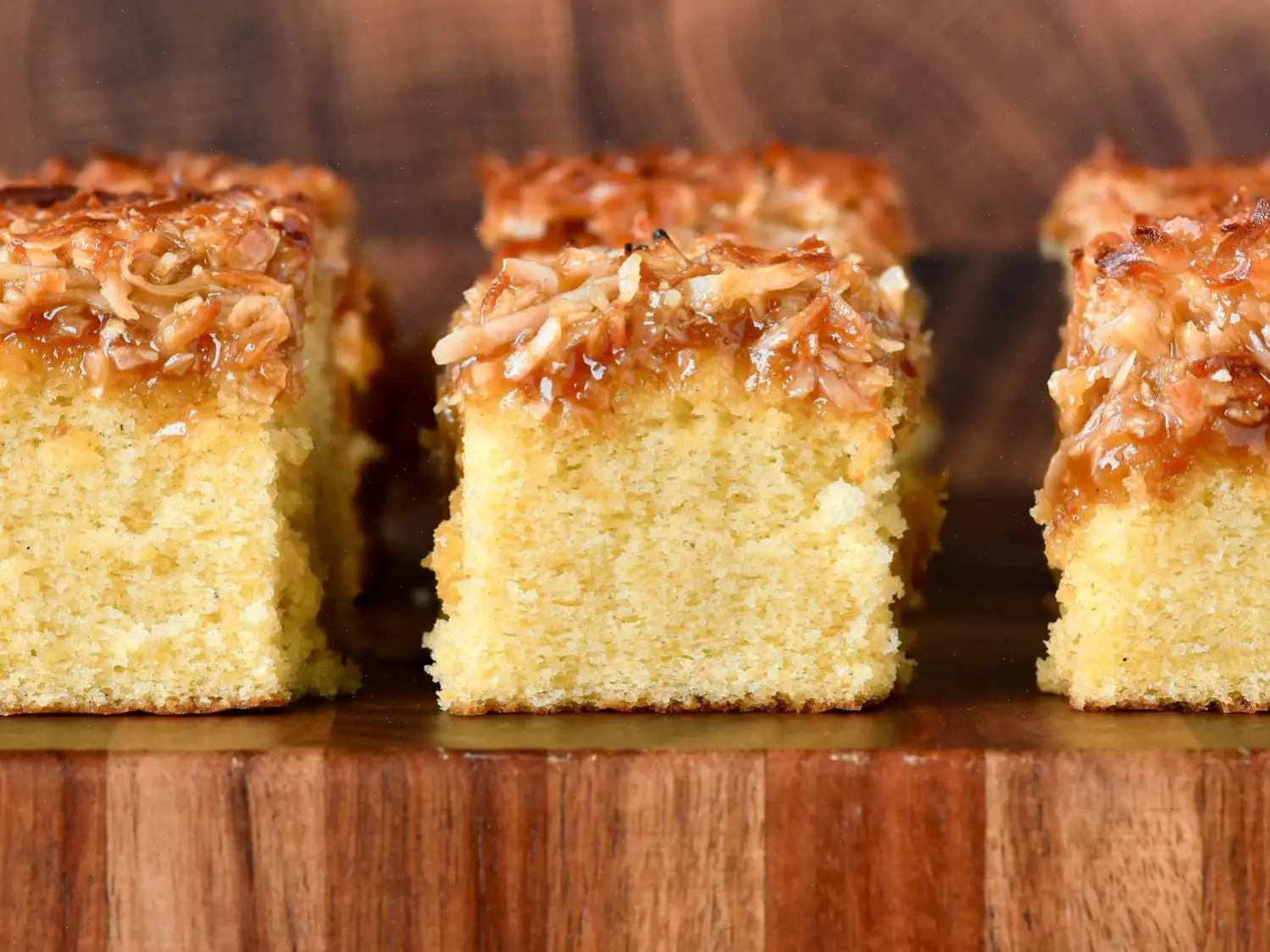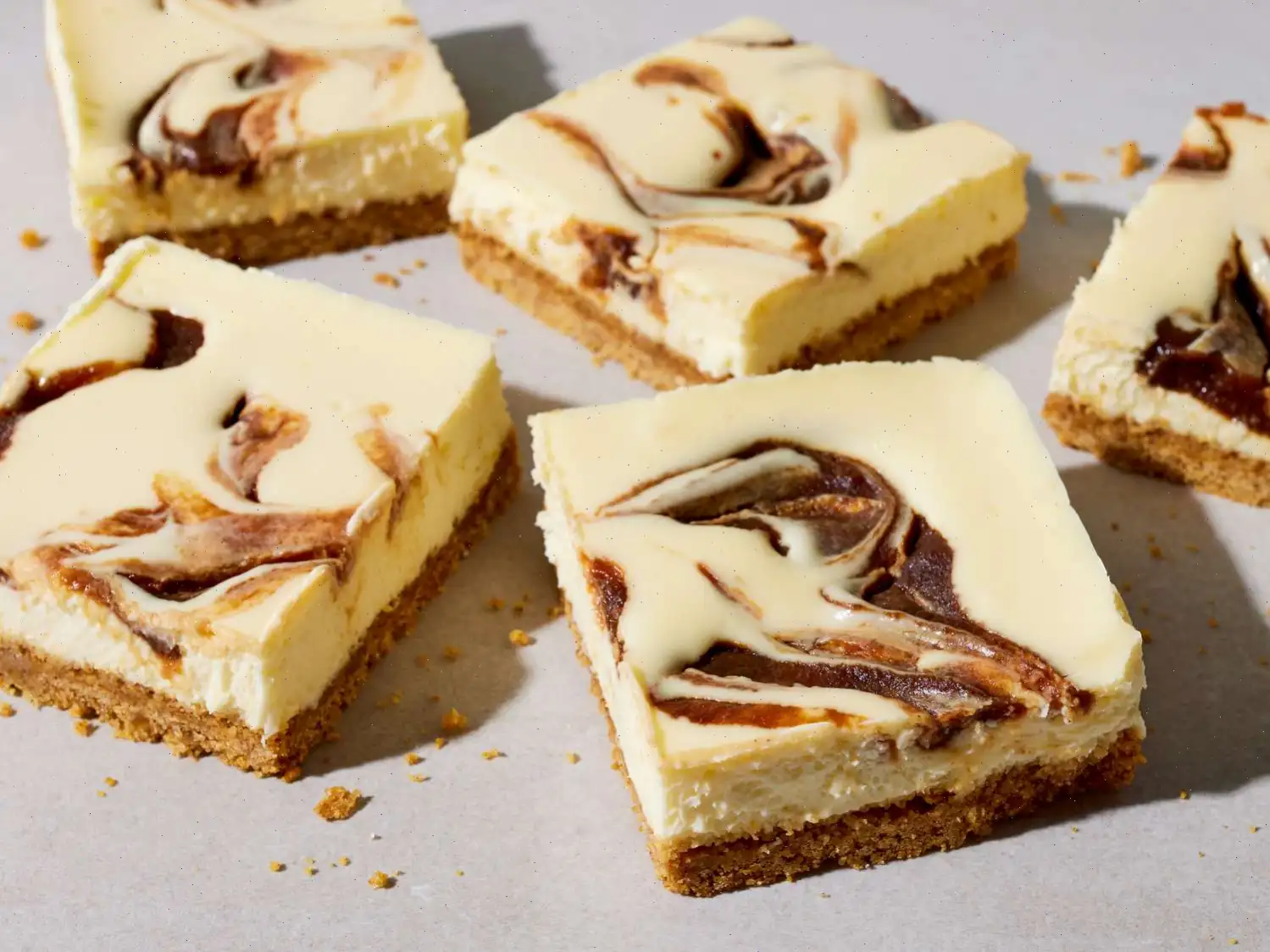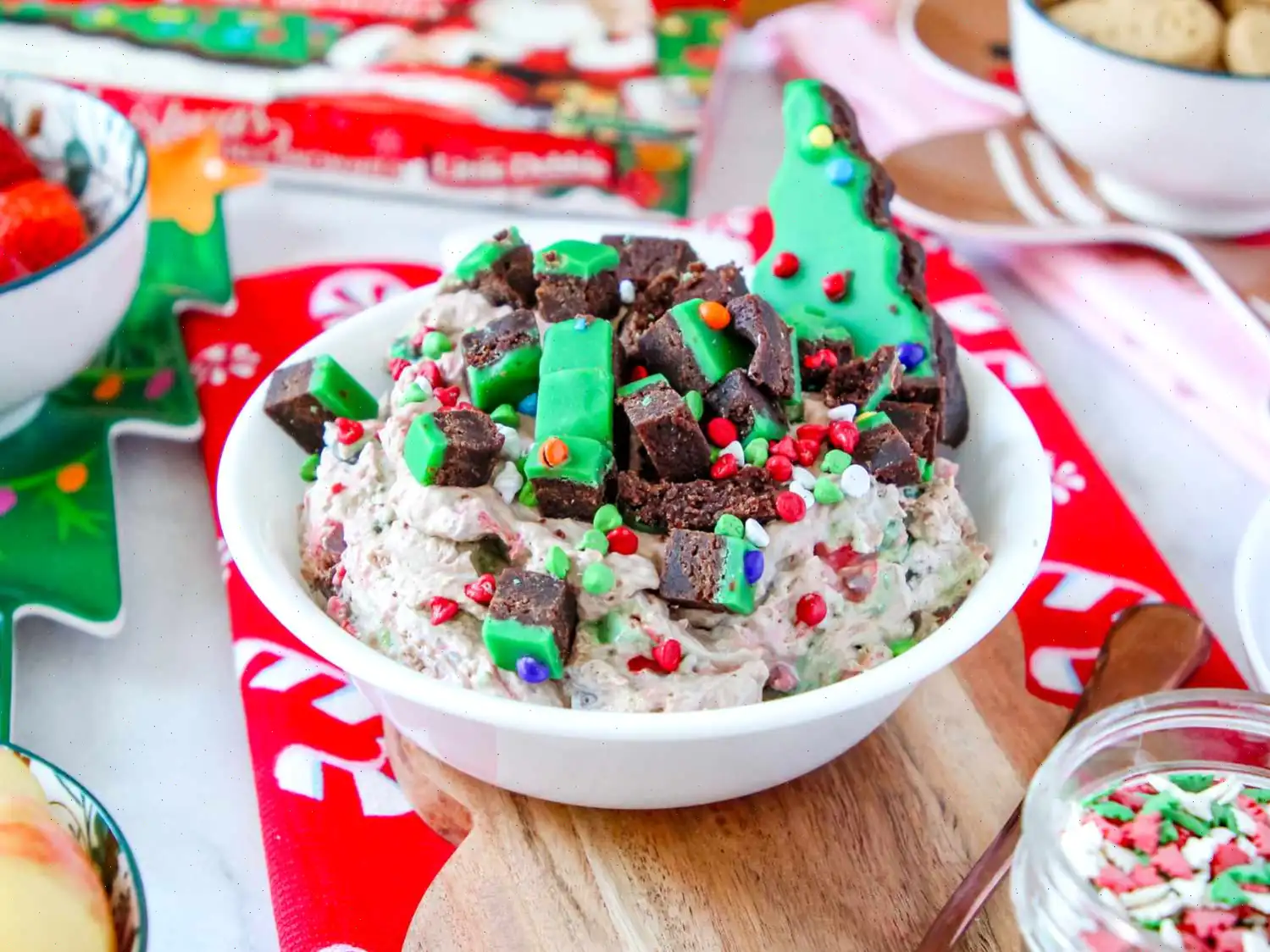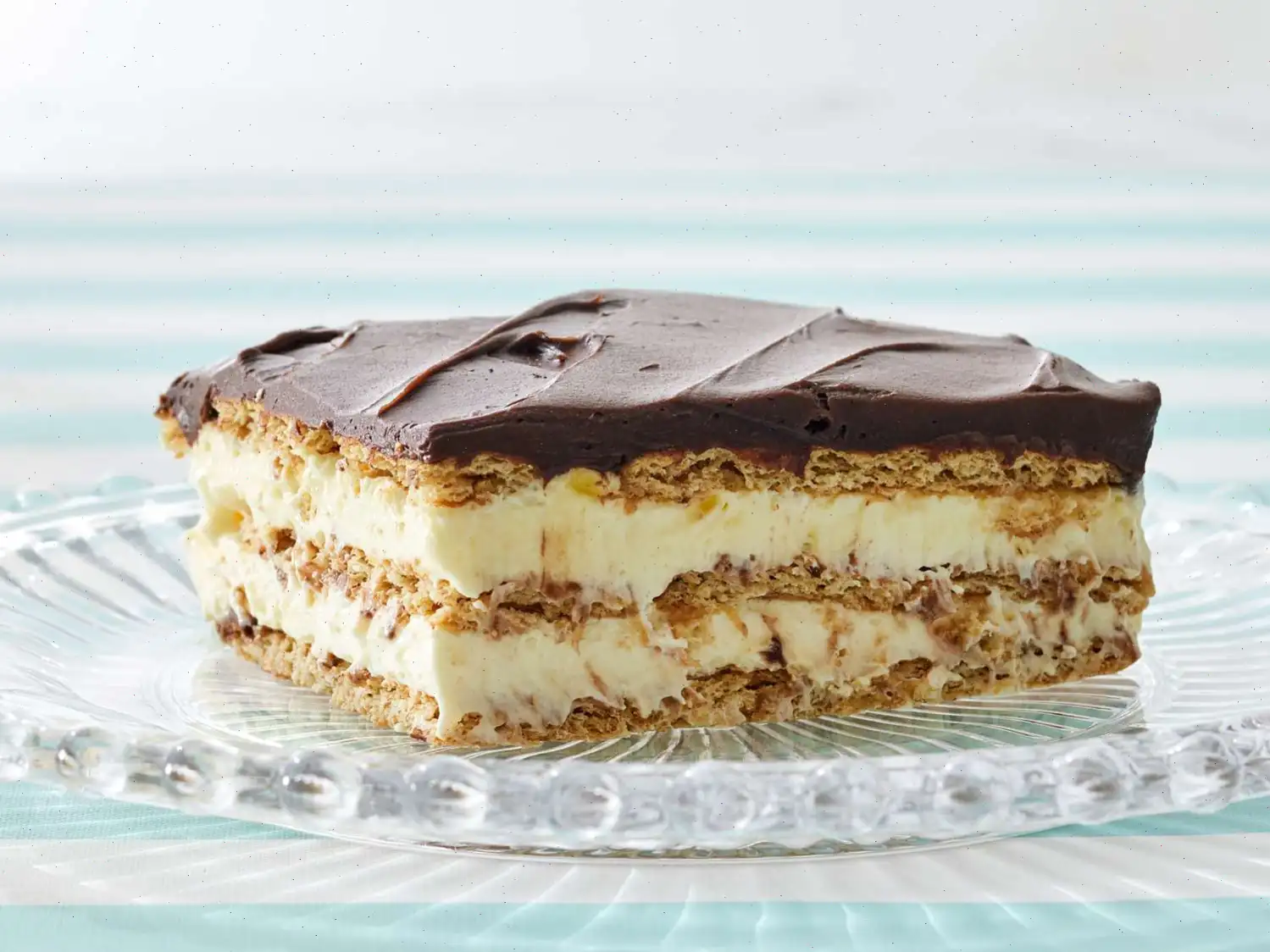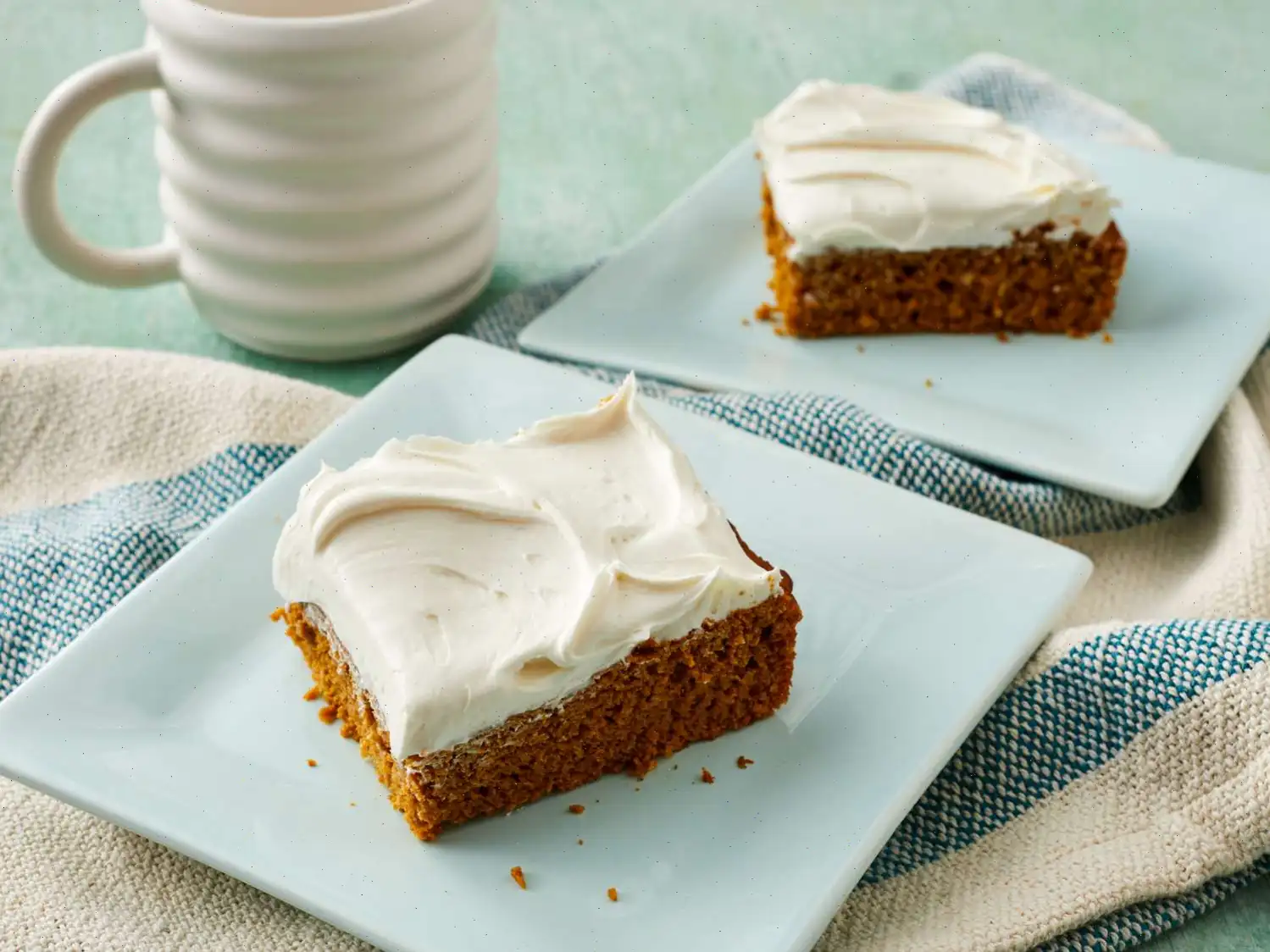
Danish Dream Cake Recipe
Ingredients
This recipe yields 12 servings. Ingredient amounts can be adjusted proportionally, but cooking times remain the same.
Cake:
- 1/2 cup unsalted butter
- 3/4 cup whole milk
- 3 large eggs, at room temperature
- 1 cup white sugar
- 3/4 teaspoon salt
- 1/4 teaspoon ground nutmeg
- 1 1/2 teaspoons vanilla extract
- 1/2 teaspoon almond extract
- 1 1/2 cups all-purpose flour
- 1 1/2 teaspoons baking powder
Topping:
- 5 tablespoons unsalted butter
- 1/4 cup whole milk
- 1/2 cup firmly packed brown sugar
- 1 pinch salt
- 1 pinch ground nutmeg
- 1 cup unsweetened shredded coconut
- 1/2 teaspoon vanilla extract
Directions
- Preheat your oven to 350F (180C) and line an 8x8-inch square pan with parchment paper, leaving an overhang for easy removal.
- In a microwave-safe bowl, combine butter and milk. Heat, stirring occasionally, until the butter is melted and the mixture is hot, about 2 to 2 1/2 minutes.
- In a large mixing bowl, beat the eggs, sugar, salt, and nutmeg with an electric mixer on medium-high speed until the mixture triples in volume and becomes pale, about 3 to 5 minutes.
- Stir in vanilla and almond extracts until fully incorporated.
- Add flour and baking powder, mixing on low speed until almost combined, leaving a few flour bits visible.
- Gradually pour the hot butter-milk mixture into the batter while mixing on low speed until fully blended.
- Pour the batter into the prepared pan and bake for 35 to 45 minutes, or until a toothpick inserted into the center comes out clean.
- While the cake bakes, prepare the topping: In a microwave-safe bowl, combine butter, milk, brown sugar, salt, and nutmeg. Heat, stirring every minute, until the mixture is bubbling and sugar is dissolved, about 2 to 3 minutes.
- Stir in shredded coconut and vanilla extract.
- When the cake comes out of the oven, preheat the broiler. Pour the topping evenly over the hot cake and spread gently to cover the surface.
- Broil the cake until the topping bubbles and turns golden brown, 2 to 3 minutes. Watch closely to prevent burning.
- Allow the cake to cool in the pan for 15 minutes, then lift it out using the parchment overhang and transfer to a wire rack to cool completely.
Nutrition Facts (per serving)
- Calories: 341
- Total Fat: 19g (24% DV)
- Saturated Fat: 13g (63% DV)
- Cholesterol: 82mg (27% DV)
- Sodium: 238mg (10% DV)
- Total Carbohydrate: 39g (14% DV)
- Dietary Fiber: 2g (6% DV)
- Total Sugars: 26g
- Protein: 4g (9% DV)
- Calcium: 78mg (6% DV)
- Iron: 1mg (7% DV)
- Potassium: 115mg (2% DV)
*Percent Daily Values are based on a 2,000 calorie diet. Individual daily values may vary depending on calorie needs. Nutrient information is estimated from available data and may not cover all ingredients. For medically restrictive diets, consult your doctor or dietitian before preparing this recipe.
The Story Behind Danish Dream Cake
Danish Dream Cake, also known as "Drmmekage" in Denmark, has a charming origin that dates back to the 1960s. The cake was created as part of a nationwide initiative to encourage home baking, and it quickly became a beloved staple in Danish households. Its name, Dream Cake, reflects both its light, fluffy texture and the rich, coconut-laden topping that makes each bite feel indulgent. Over time, it has become a nostalgic treat for generations, often evoking memories of family gatherings and homemade desserts.
Regional Variations
While the classic version hails from Denmark, slight variations exist throughout Scandinavia. In some regions of Denmark, bakers add a touch of almond paste to the base cake for extra flavor, while in Norway and Sweden, the topping may include a mix of brown sugar and a hint of cardamom, giving it a subtle aromatic note. Despite these differences, the core combination of soft vanilla cake and a caramelized coconut topping remains consistent, making it recognizable across the region.
How It Differs from Similar Cakes
Danish Dream Cake stands out from other coconut-topped cakes primarily because of its broiled topping. Unlike many other cakes where the topping is simply baked or mixed into the batter, Danish Dream Cakes topping is poured over the hot cake and briefly broiled. This method creates a delicate, slightly crisp surface that contrasts beautifully with the soft cake underneath. Its unique texture and preparation distinguish it from simple coconut cakes or even other Scandinavian desserts like Kardemommekake or Kokoskake.
Where Its Commonly Served
Traditionally, Danish Dream Cake is served at coffee breaks, known as kaffemik, or during festive occasions such as birthdays and holidays. In Denmark, it is often accompanied by a hot cup of coffee or tea, making it a quintessential part of Danish fika culture. You may also find it in bakeries and cafes throughout Scandinavia, where it is enjoyed as an afternoon treat or a celebratory dessert.
Interesting Facts
- The cake is sometimes called "Lazy Daisy Cake" because of its easy preparation and quick assembly, despite its rich flavor.
- Danish Dream Cake gained international recognition after being featured in Danish cookbooks in the 1970s, helping spread its popularity beyond Scandinavia.
- Its broiled topping is often the favorite part for many, as the slight caramelization adds a complex flavor and crunchy texture.
- The dessert reflects Denmarks long-standing love of combining simple ingredients like butter, sugar, and coconut into sophisticated home-baked delights.


